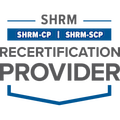- +1 902 932 7300
- Academy@roman3.ca
- Mon - Fri: 9:00am - 9:00pm
- 11 Opportunity Lane, Coldbrook Nova Scotia, Canada B4R 0A5
A Practical Approach To Change Management
A world full of change
The world has been going through massive and dramatic transformations and it is been felt in all aspects of daily lives. Our home, our relationships, our health, and our safety, have all been affected. However, one of the largest places that have been impacted is our work. The workforce and nature of work have been slowly evolving for a long time. Technology, expectations of the labor market, environmental sustainability, and automation are just a few examples of the changes we have been dealing with on a steady progression. However, since 2020, things have been pushed from slow and steady, to rushed and imminent. The need to handle change has always been important, but now it is likely the only way some of us will survive.
Change Management is something everyone should be familiar with. It is one of those consistent and essential skills that are required for everyday success; like leadership abilities, technology competency, and human resources proficiency. However, like those skills, most people do not take the time to intentionally develop their skills with change management. It often does become a priority until you need it, but by then it’s too late to spend the time to learn about it. Like with leadership, technology, and Human Resources; we don’t know what we don’t know, and our success can be severely limited because of it.
So, let’s be proactive and learn about how to handle change before the next time we need it.


Change Management is complicated, right?
Part of the reason many of us avoid learning to successfully manage change is that it looks like a long, convoluted process. There are a lot of tools, acronyms, software, and charts that often come up very early in the process that makes many of us tune out. Now, these tools and charts can be quite helpful once we get into the process, but early on they tend to scare people off. Where people need to start is not with the tools and charts, it is with a fundamental understanding of the psychology of change and how to practically deconstruct change in smaller, manageable parts that everyone can get on board with.
At Roman 3, we make change management simple to understand, practical to implement, and powerful in its application.
Our approach starts with separating change management into two parts:
- Change Guidance
- Project Management
Change Guidance
Responsible for the people side of the change. This starts at the beginning of the change process, way before any actual change takes place.
The Change Guide is responsible for guiding the people involved in the change through the uncertainty and emotional rollercoaster that comes with large change. They are responsible for the communication, creating buy-in, creating the narrative for the benefits of change, dealing with the emotional reactions of the people, and making sure the change in actions and change in measurement is understood and accepted. They are solely responsible for the Change Minds and Change Thinking stages.
Where people need to start is not with the tools and charts, it is with a fundamental understanding of the psychology of change and how to practically deconstruct change in smaller, manageable parts that everyone can get on board with.
Project Management
Responsible for the paperwork side of the change. This is the center of the process where the actual change in policies, equipment, resources, and practices are implemented.
The Project Manager is responsible for managing the incorporation of the new reality. The specific elements that are going to be different need to be managed to allow for optimization, ease of application, and ultimately better results in the end. The Project Management starts at the end of the Change Thinking stage to shape the new thought process. It cares on through the Change Actions stage where the actual incorporation happens and ends at the beginning of the Change Measurements of Success stage to identify the new Key Performance Indicators (KPIs) and indicators of success.
Once the roles are divided, then we look at the Stages of Change.
First, we start to Change Minds:
Creating buy-in for the change. Moving people past the reluctance of change and getting them to the point they understand that Old = Good, but New = Better. This is a lot of communication activities, using logical and emotional evidence to generate support for the new reality that is coming. They do not need to be excited, they just need to not be in opposition. This often requires managing expectations. This stage usually starts well before the change is supposed to be implemented. Creating buy-in can be a large undertaking on its own. You can’t expect the same message and approach to work on everyone. Senior leadership will often respond to the presentation of the business case or the financial implications of not changing. (For help on that check out our resources on Labour Value Loss). Middle to Entry Level employees will often respond well to how the change will eliminate administrative burdens, or create more job satisfaction. Ultimately this is about a really good sales pitch from someone who can present influential evidence to convince people.
Then, we focus on beginning to Change Thinking:
This is about creating acceptance of both the new way of thinking that will be required to implement the new reality to come and to accept the messy uncomfortable nature that will come from the transition. This stage is challenging because it involved both shaking the complacent rust that exists with people’s comfort zones, especially if the status quo is very ingrained. Then we need to start retraining people to think in line with the new way of doing something. There is a lot of conditioning that comes with Changing Thinking. This can look like avoiding the default to the old way and adopting new problem-solving strategies, or accepting the new chain of command or events that come with the everyday adjustments. The Project Management starts at the very end of this stage to create an understanding of how to use the new methods or planning how the new change will work. Ultimately this is about cognitive retraining and getting people’s minds and emotions ready to handle both the transition period and the new reality.
Next, we will Change Actions:
This is where the Change Guidance and Project Management work in tandem. The Project Management prepares the paperwork, the policies, the technological part of the change. It executes the actions of the change and the administrative, tangible processes that are visible and critical to the change actually taking place. The Change Guidance stays focused on the people. Maintaining communication to help speed up the adoption of the new policies and processes. Ensuring that there is acceptance and maintained buy-in for the change. It is important to make sure everyone involved feels heard and the transition is stage is not too disruptive. Avidoing uncertainty and allowing people to make mistakes with the new processes is critical for this stage.
Last, we need to Change Measurements of Success:
The beginning of this stage is very important for the Project Management to identify the practical KPIs of monitoring success for the new reality. Creating the benchmarks and signs of success can only come from fully understanding and accepting the elements that have been changed. The Change Guide needs to carry through this stage and ensure buy-in on the new measurements of success. It is also important to communicate the success that has come from the change. Create awareness of the met KPIs, why reaching them is important, how the change has been beneficial now and will continue to be in the future.
Project Management and Change Guidance: Working together
Our process is a simple and practical method of managing change that combines best practices from Organizational Psychology and effective Project Management. According to the PMBOK Guide (Project Management Body of Knowledge) by the Project Management Institute (PMI), a project management life cycle consists of 5 distinct phases including initiation, planning, execution, monitoring, and closure that combine to turn a project idea into a working product.
The Project Management Life Cycle fits very well into our practical approach to change management.

This makes the partnership between Project Management and Chance Guidance a natural process to implement when trying to create transformative and sustainable change.


